VIRTUALLY SPEAKING directed by Joe Hunting is a documentary that opens a window on the world – and the people – inside VRChat. A pioneering work presented at Raindance Immersive that caught our attention
In the past three years there has been a progressive increase in the use of social VR platforms such as the now popular VRChat.
One of the reasons why some of us eventually decided to join them was the decision, taken by many film festival in 2020, to adopt some of these platforms to host their VR sections. This gave their audience the opportunity to “physically” join events that, because of Covid, were unreachable in other ways.
Sometimes, depending on the platform, even the part of the audience who did not own a headset – or the right headset – could take part in the experience. An accessibility which I personally hope will also be encouraged after Covid19, to facilitate public participation in relevant XR events around the world.
The history of these platforms is a long one: they have fascinating applications in different fields (culture, education, research, etc.) and interesting effects on socialization.
At this regard, Ian Nordin (University of Texas at San Antonio) writes, talking about VRChat:
In my time with the game, I asked many random users their reasons for getting invested in the experience. The common sentiment was that it was therapeutic — a safe-space for those who felt isolated, inept or otherwise not confident enough to practice their communication skills without feeling weighed down by real-world social consequences
Ian Nordin on “VRChat Is The Perfect Game For The Socially Awkward”
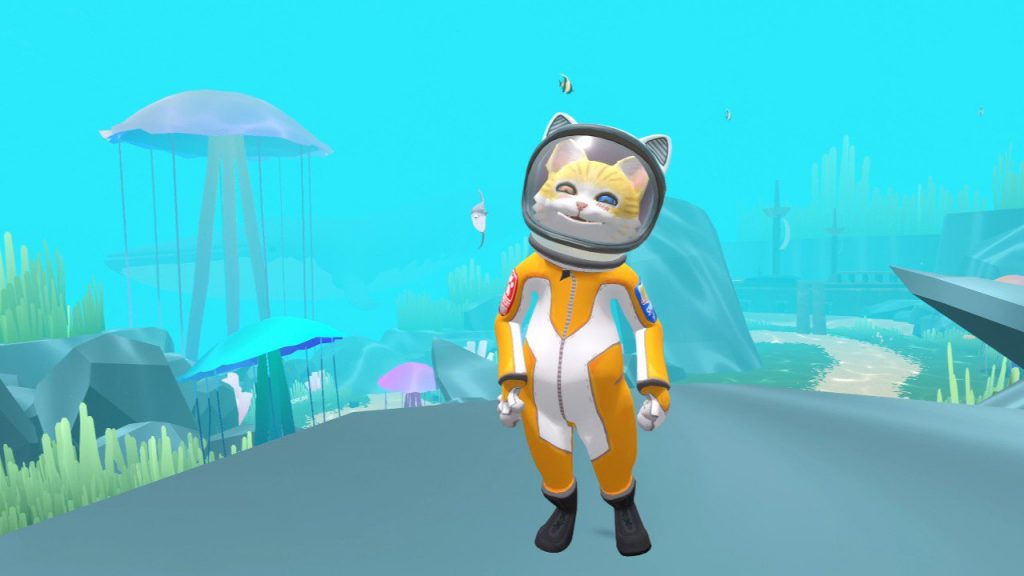
During the Raindance Immersive I had the chance to discover a documentary that allowed me to better understand this specific platform and that opens a window on the people who belong to this world.
VIRTUALLY SPEAKING is an episodic documentary series filmed entirely inside social platform VRChat, presenting real conversations from a diverse global cast, comically represented by their virtual avatars. You’ll meet an intelligent grasshopper, a songwriting space cat and more in this humbling show capturing how people felt about the world in 2020 (link)
Joe Hunting, its director, is a pioneer in this type of production.
His passion for documentary storytelling inside virtual reality app VRChat started with the award-winning short film A Wider Screen and led him to the creation of this 11-episode series, distributed by the British short film distributor discover film. A documentary that is a pleasure for the eyes and a psychological journey through interactions between people.
We met him to talk about his work, the fantastic cast of VIRTUALLY SPEAKING and the future of social VR.
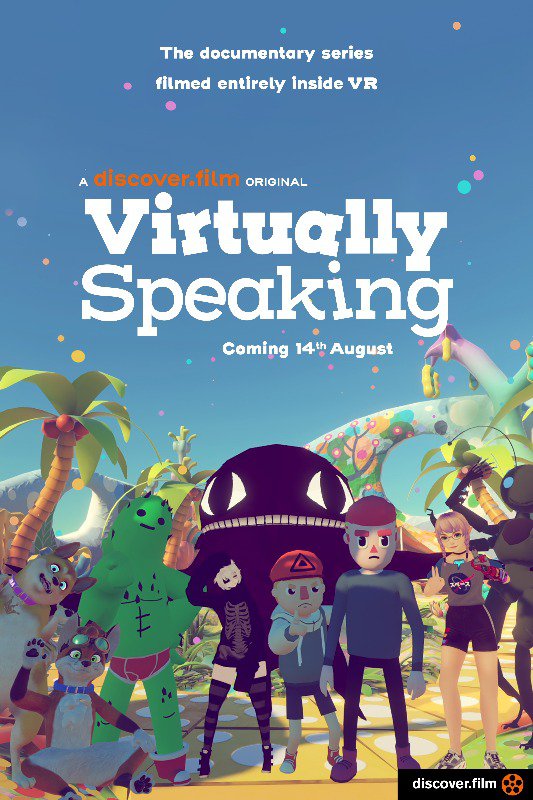
Joe, how did you start working with VRChat?
J. H. – It’s been two years, now! In 2018 I bumped into an article about how VRChat was a support for people and their mental health. I was playing a lot of social games at the time, so the idea that people would connect online and formed relationships and friendships really called me.
I immediately started interviewing users inside VRChat and asking them about their social and emotional experiences inside the platform. Pretty soon I found some amazing people and stories and I just could not stop filming… especially considering the so many different locations I could use – all user generated. Something that, from a filmmaking perspective, becomes addictive very soon.
So, I made my first film, A wider screen, in 2018. It had a really successful festival run – something I found surprising and that inspired me to continue on this road.
Club Zodiac followed and then discover film commissioned me VIRTUALLY SPEAKING, which we worked on for about six months, and during lockdown too.
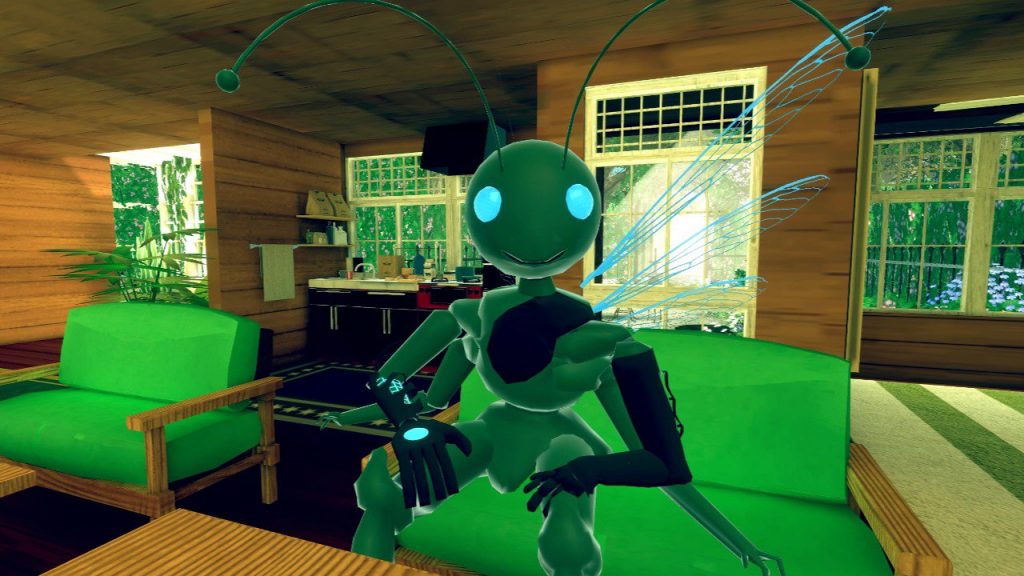
What characterizes the interviews carried out in the world of VRChats?
J. H. – When you go into VR or in a virtual environment in general, you’re an avatar – and you’re represented by that avatar. You don’t even have a real name. For example, in my films I don’t even mention real names and I associate my characters only with the identity of their avatars.
When it comes to interviewing, this anonymity really supports people’s confidence to discuss what they want to discuss openly and not to perceive any judgment.
In VIRTUALLY SPEAKING, that allowed me to just have fun with my questions and not get too overly concerned about what the outcome was going to be: we could talk freely about everything and that was both great for the show and respectful of the intimacy of my characters.
In real life people are much more concerned about their representation. They feel naked, somehow. In VR this does not happen. It’s almost like you’re wearing an armor that keeps you happy, free and positive.
It is a liberating experience. And something that makes the characters even more compelling to watch. Like Spork, for example. She was adorable and incredibly expressive!
J. H. – She was fantastic!
A lot of people don’t quite understand this about VRChat, but the facial expressions? You control them with your hands and your gestures. So, when Spock’s eyes open wide and she is looking surprised or smiles and laughs, she is actually puppeteering her avatar with her hands. The whole cast has become very good at this and it made the documentary so much better! You get a sense of their emotions because they’re actually showing them, but through their hands.
What were the main obstacles and challenges you met while creating VIRTUALLY SPEAKING?
J. H. – There were a lot of technical challenges, especially with regard to sound. When recording in VR, there are a lot of pops and squeaks and scratches, because sometimes people’s microphones and the network have problems. This was something that needed to be controlled.
Aside from that, in terms of production and dealing with the cast, I really can’t think of any difficulty. Some characters did talk a lot and were amazing to look at, so it was a bit hard to stop them! (laughing) There was not a single conversation that lasted less than an hour. Considering each episode was under 10 minutes, you can imagine the abundance of footage I have now – storage was a challenge as well in this respect!
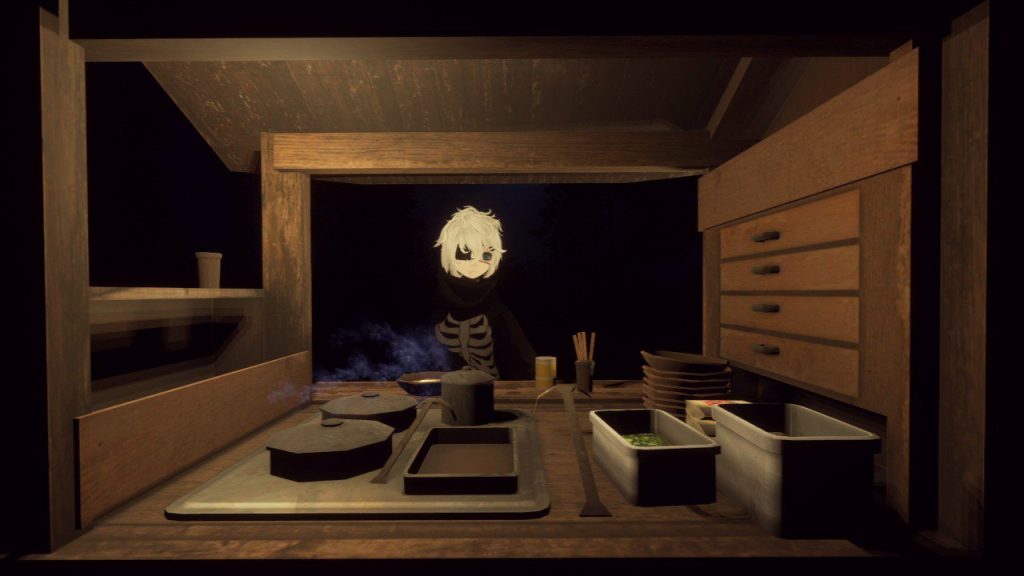
When watching VIRTUALLY SPEAKING I was surprised by how avatars simply stopped being avatars for me at some point. All I could see were the people behind them and how they felt about things.
J. H. – I’m glad that landed for you! …The uncanniness when you see an avatar on a flat screen and you think of it as an animation… but then you have that moment of realization in which you understand that it is a real person and then you really connect with them. With their soul, and their words, and their voice. It’s magical, I think.
And, you see, I was really passionate about the idea of creating a comedy show out of VIRTUALLY SPEAKING, something that was fun and entertaining. But I also wanted for people to understand my characters, to feel for them. In other words, to have a much more heartwarming and heartfelt approach to my work. And I’m happy this happened.
What is the most surprising thing you found out while working at VIRTUALLY SPEAKING?
J. H. – When I was working on the casting, I really wanted to find a diverse cast and to get opinions from different personalities and different cultures. I struck gold with that! I had not realized that the people I found had very different perspectives on everything. At first, I was a bit worried that they would all say the same thing, but it almost never happened.
Funnily enough, I also found out surprising things about my cast. In the “Animals – Part 4” episode, there are two dogs outside of the main dogs group who are having a barbecue. Those two are father and son and their relationship with each other was like two best friends, which surprised me, and was a delight to watch on screen.
But all the characters had their surprises and stories. When I asked Jack if he could bring his wife Debbie in, I was surprised she said yes. She came in and had a fantastic time as well. It was amazing having those two. They’re of an older generation so it’s perfect to have their opinion in the mix.
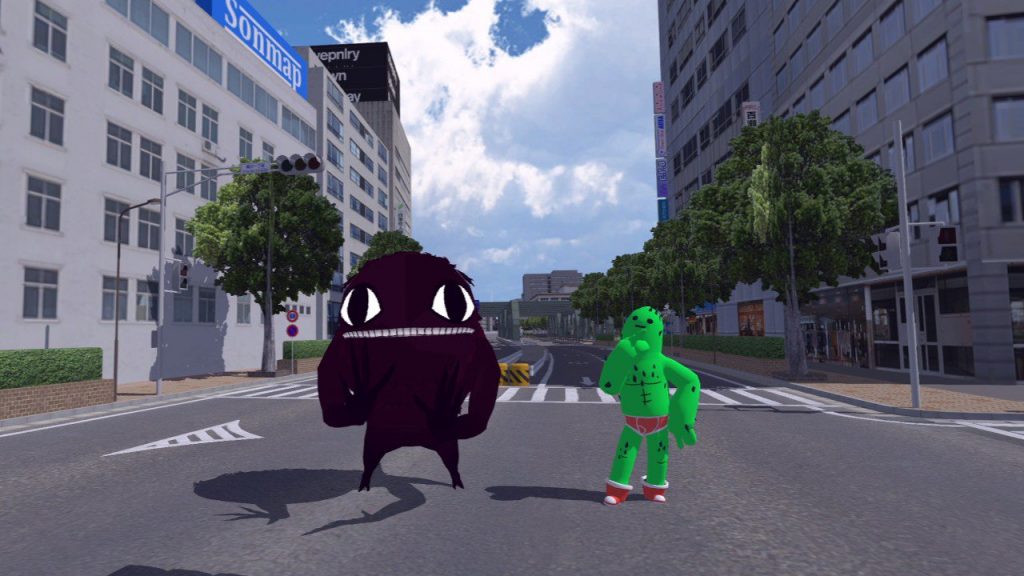
From a technical point of view, how do you shoot scenes in VRChat?
J. H. – I have recently started using the VRC lens camera, a user generated, still-in-development camera that you have to attach to your avatar and then upload to VRChat through Unity.
In terms of using the camera, you activate the VRC lens on your hand and then you can control the lenses, the aperture, the focal length of the camera, and the zoom… it’s just like a DSLR camera or a cinema camera where you control everything with your thumb.
For VIRTUALLY SPEAKING I used a much simpler instrument, because the VRC lens camera was not available at the time. I shot with the default camera, which is native to VRChat. It can be used as a tripod camera, so I set it down, and I could walk or move around my VR space and it wouldn’t move. Then I would bring my cast in, and find their place in the scene. Then I put the camera down and hit a few buttons to keep it in place.
Sometimes it was a really composed scene. Since the editing was quite quick, even still compositions worked nicely.
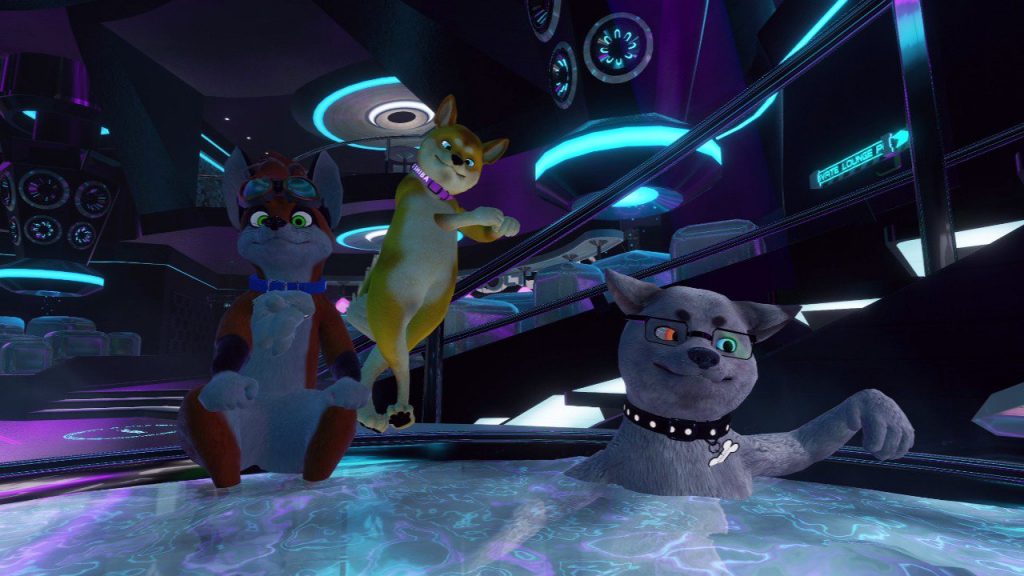
You had so many different locations! Did you choose them yourself?
J. H. – We had over 80 locations and all of them you can go and visit for yourself, as well.
I went location scouting for every episode and every interview I did, so that I could find places that suited the characters and the topics.. For example, Spork is very small and wears a space helmet so her part in the “Animals” episode was shot in an underwater scene.
There are thousands of worlds in VRChat to choose from and I’d spend about two hours, every day during production, location scouting and finding the perfect ones to film in. A demanding work, but I’m glad I did it, because having the right settings is such a huge part of the series!
A care that you put in the choice of the avatars too. Different personalities, different avatars?
J. H. – That was something we considered. Some of the people I talked to built their own avatar, like Popoplo, the beautiful grasshopper. Others helped me choose theirs. I asked them “What do you want to be? And how do we represent it?” and we just run around and find the avatars. It was always very playful, and I let them have the freedom to choose their avatars because I wanted them to feel confident in that skin.
A lot of them were not sure in the beginning but as soon as they saw themselves and heard their voice come out properly, they were all in, which I’m thankful for.
What you created gives us an interesting insight in socialization and communication dynamics. How is social VR changing them?
J. H. – This year has been really amazing for me to learn more about the future of VR. Because of the pandemic a lot more people have come to social VR and are looking at it as a place to have events and socialize… because right now we can’t have all this in our real lives.
I think next year we will have a huge surge in social VR with a lot more users coming in and trying it for the first time, and also creating content for it.
We’ll see more events, like film festivals. There are already Cinema worlds where people can go and watch a screening together. There are a lot of immersive theater projects where you can pay for a ticket and join a theatrical production in VR. There are even interactive escape rooms. It feels like a lot of different entertainments we have in real life are just transitioning to VR now and next year all entertainment topics will be in transition to VR.
At the same time I think we will see more VR arcades and VR cinemas and VR escape rooms in “real life” as well. Office spaces may go into VR as well: people meeting and working remotely and connecting in social VR. I know some tutors are already using VR platforms as a form of teaching and as classroom spaces and we might see an uprising there, too.
I just think there will be a new reality for us to hold events in. It’s hard to tell specifically where it is going but it is definitely growing.
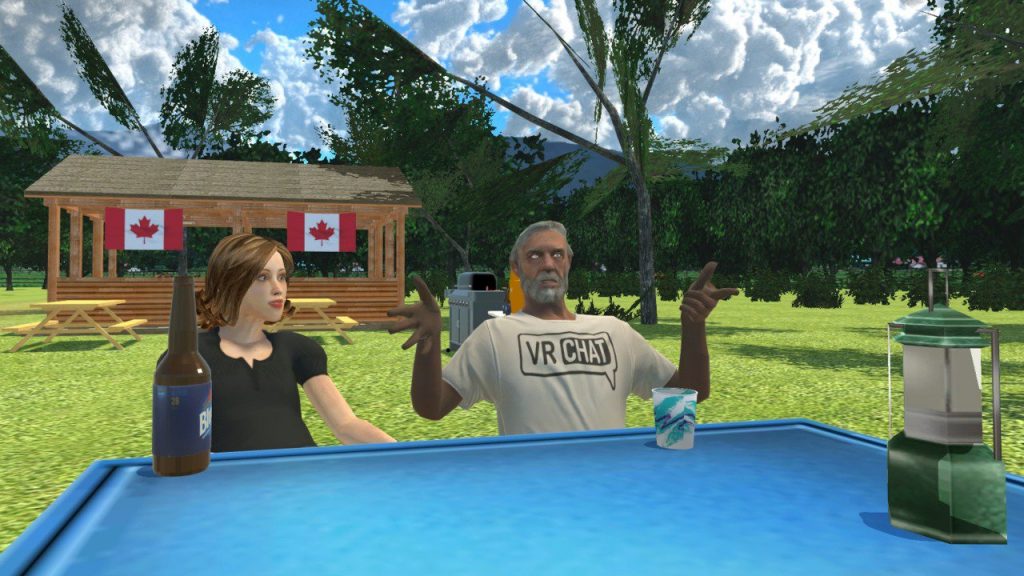
You’ve recently premiered your work at Raindance Immersive. What can you tell us about it?
J. H. – Raindance hold all their events inside social VR, specifically in VRChat. They have their own world inside VRChat, the Raindance Embassy. It s a great example of how branded companies and events are bringing their content, their media and their work in general into social VR.
I am actually in charge of all the Raindance videos. I directed the trailer and all the promo videos you’ll see on their Twitter.
You see, my line of work is not an easy one. I was grateful for the opportunity given to me by discover film: it is hard to find funding for works filmed inside a platform where there is a lot of copyrighted content (game characters, game assets, references to TV-shows and movies, …). To market that can be really challenging.
This experience with Raindance helped me. It gave me the chance to better understand a branded company and I was so creatively inspired while doing it. We built a world that had its own vibe – a jazzy one – and that it was a pleasure to experience. It has been a really fun experience.
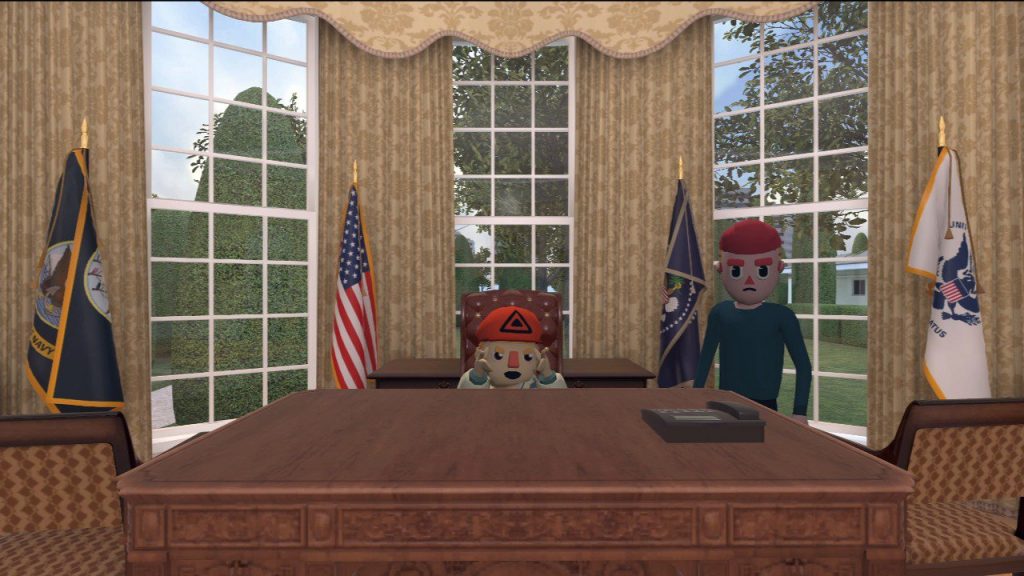
What about this other festival you’re going to work with, in December?
J. H. – I’m collaborating with the A MAZE. Festival, filming content for their events. They are a games jam festival that includes independent and alternative game projects, virtual realities and other digital and playful dimensions.
Typically, in real life, this jam happens on a train journey from Cape Town to Johannesburg, and there is a media festival and you show your work there.
They brought that idea to VRChat: they built a train station and trains where people are going to do jams and then they show off the work that they’ve made – and are doing the 48-hour jam inside VR.
It’s a really exciting project and I’ll be making the trailer and doing the coverage for their events, something I’m really looking forward to.
VIRTUALLY SPEAKING is an on demand series directed by Joe Hunting and produced by Joe Hunting, Jasmin Bensted, Katie Bailiff. It is available on discover film at this link.

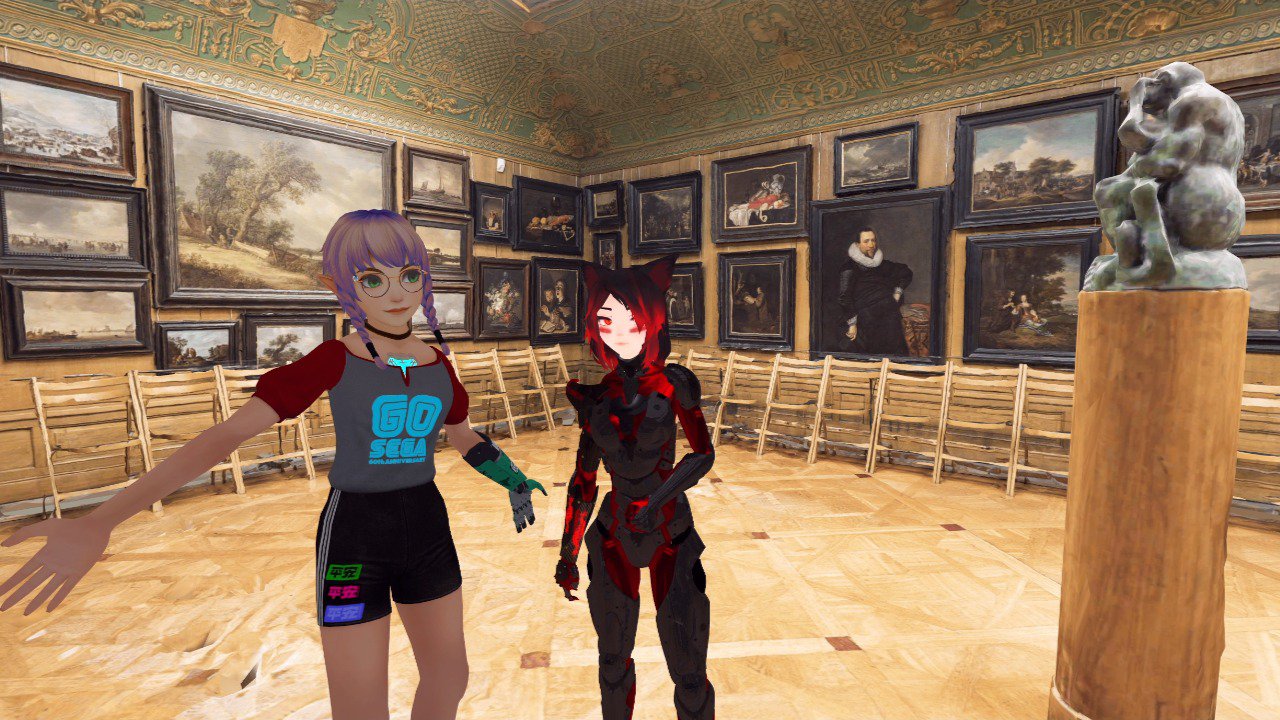

Leave a Reply
You must be logged in to post a comment.